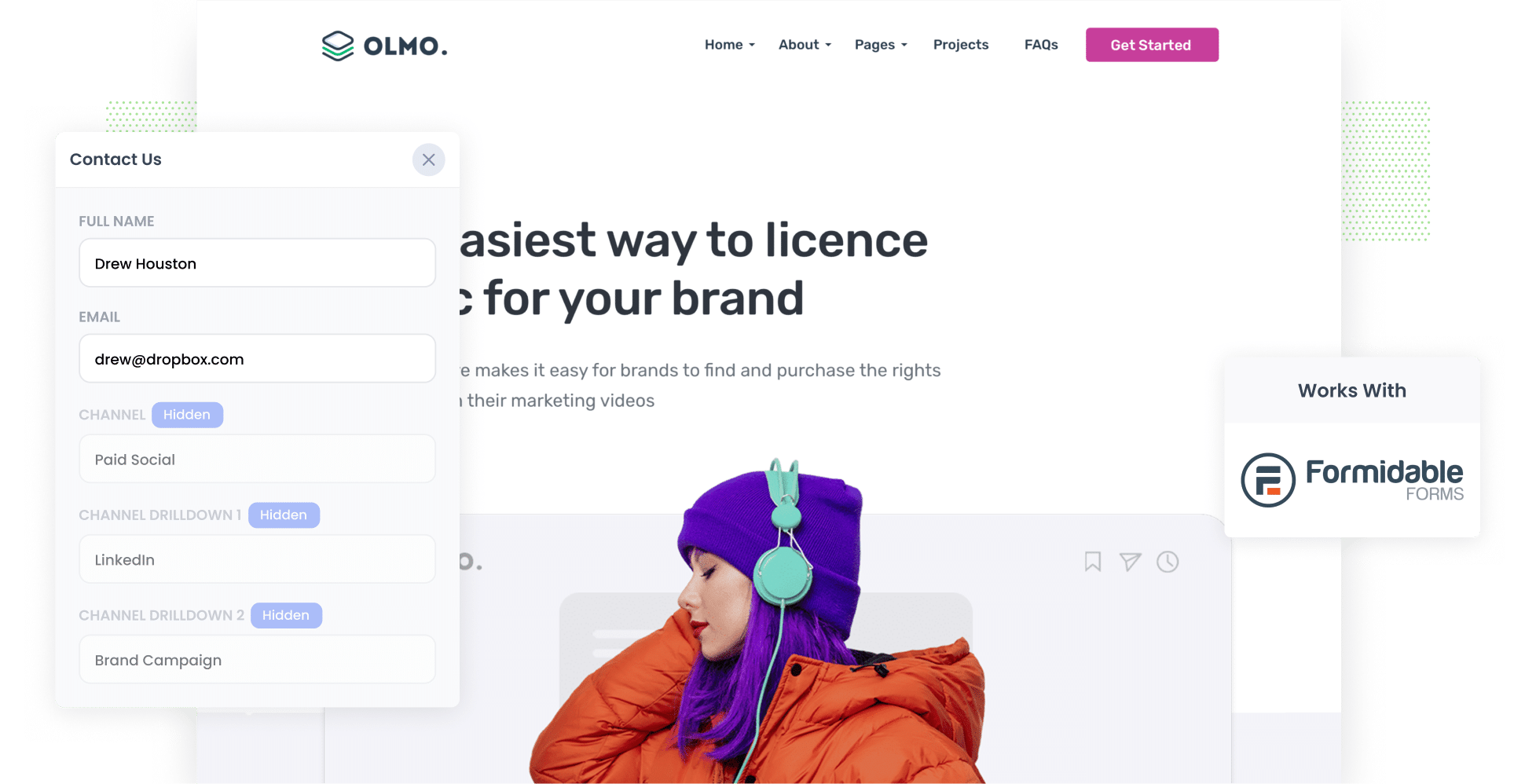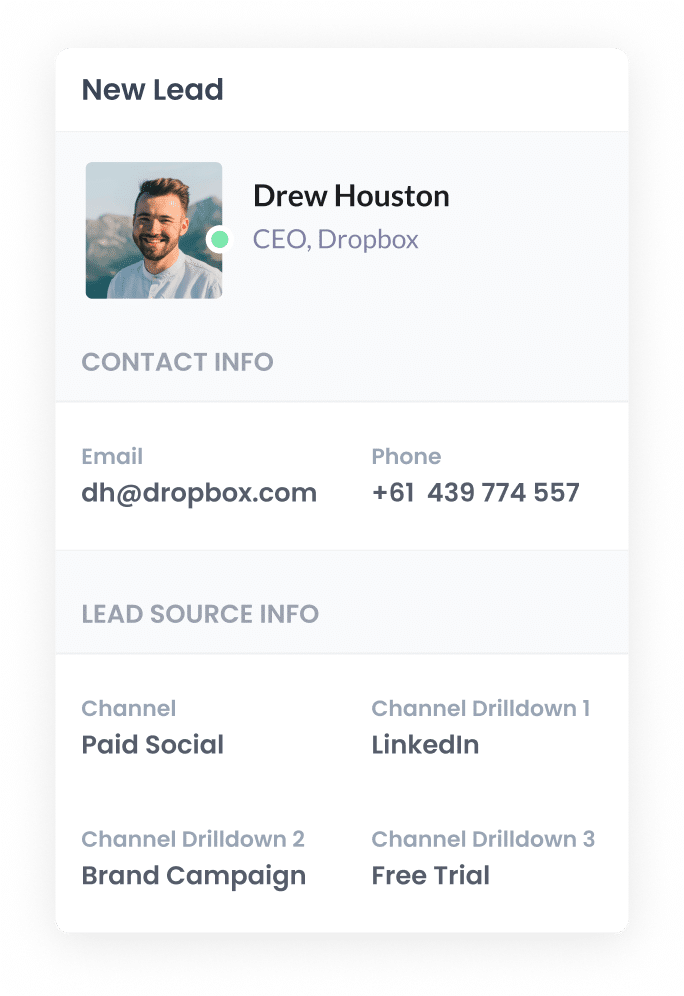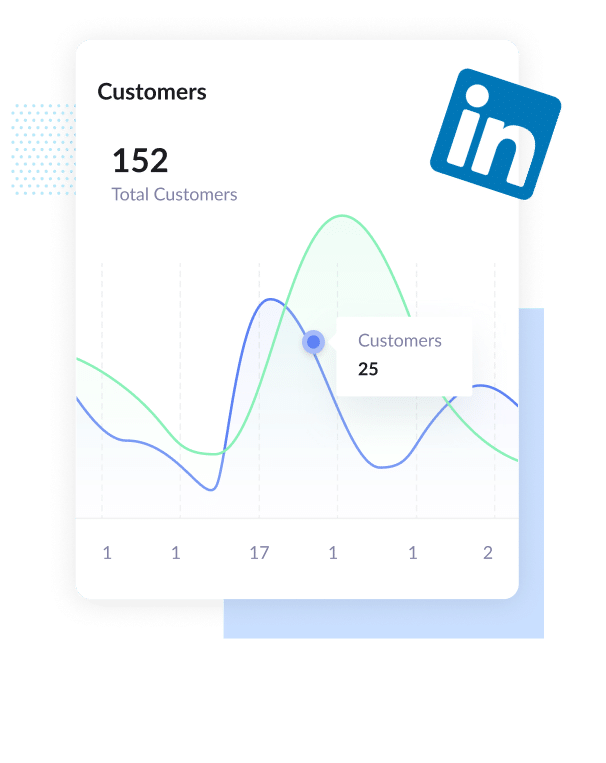How to easily get LinkedIn Ads data in Formidable
Tracking Linkedin data so you can know how many customers and leads your getting is easy. Read on to learn how to use Attributer and Formidable to do that.

Want to know how to track the number of leads or customers you're getting from your LinkedIn Ad campaigns?
The LinkedIn platform is a great way to generate leads for your business, but if you don't know how many leads and customers you're getting from your campaigns then you won't know if it's working or not.
But luckily there's a solution - and it's an easy one!
In this blog, we’ll show you how to use a tool called Attributer to get LinkedIn Ads data into Formidable, send it to your CRM, and other tools, so you can track which leads and customers you're getting from your LinkedIn Ads - and other marketing campaigns too!
4 steps for capturing LinkedIn Ads data in Formidable
Here are 4 quick steps to capture LinkedIn Ads data with each submission of your Formidable forms:
1. Add UTM parameters behind your ads and include hidden fields in your forms

The first step for tracking leads and customers generated by your LinkedIn Ads is adding UTM parameters to each of the ads you are running.
While you can include whatever information you like in the UTMs, we recommend this:
- UTM_Medium=paidsocial
- UTM_Source=linkedIn
- UTM_Campaign=brand campaign
- UTM_Term= ad name
If you need help creating UTM parameters for your LinkedIn Ads, free tools are widely available online to help you build them.
Adding hidden fields to your forms is a quick task. To add a hidden field to the form, simply drag and drop the ‘Hidden Field’ field type from the left hand menu into your form. There are step-by-step instructions on how to add the hidden fields to your Formidable form here.
2. Install Attributer on your website

Next is installing Attributer on your website.
If you're not familiar with the tool, Attributer is a little piece of code that you install on your website.
When someone comes to your website, Attributer looks at where they arrived from and categorizes them into the appropriate marketing channel (I.e. Paid Social) before storing the information in a cookie in the user's browser.
When a visitor submits a form on your website, Attributer populates the attribution information into hidden fields you add to your forms and it is captured in Jotform.
Getting Attributer set up takes just 15 minutes and step-by-step instructions on how to install it can be found on our help site.
3. LinkedIn Ads data is captured in your Formidable form

When a visitor submits a form on your website, you'll receive data on how they found you (I.e. which LinkedIn Ads campaign they came from, which ad they clicked, etc).
You can then use Formidable's native integrations (or 3rd party tools like Zapier) to send this data to your CRM or other tools.
4. See how your ads are performing

The last step is putting the data to work. You can use this data to run reports that show how your LinkedIn Ads are actually performing.
Reports you can run include:
- Number of leads generated by LinkedIn Ads
- Number of leads generated by each campaign you are running
- Number of customers generated
- Amount of revenue generated from LinkedIn Ads
- And so much more!
Why Attributer is the best way to track LinkedIn Ads in Formidable forms
Attributer is the best way to capture the UTM parameters you place behind your LinkedIn ads. Here's why:
1. Captures the source of all leads
On top of capturing data on the leads that arrive from your LinkedIn Ads, Attributer also sends through the marketing attribution data on leads that come from other channels (including Organic Search, Organic Social, Paid Search, etc).
This means you can see where ALL your leads are coming from, and helps you to make more informed decisions about how to spend your marketing budget and time.
2. Remembers the data
Other ways to capture the UTM parameters behind your LinkedIn Ads don't work if a visitor navigates around your website.
Say a visitor clicks a LinkedIn Ad, lands on your homepage, clicks the ‘Get A Quote’ button and completes a form on a different page to where they originally landed, no information would be captured.
However, Attributer works differently. It stores the UTM parameters in a cookie in the user’s browser, so it doesn't matter which page they complete a form on, the information will be passed through.
This means you will have more accurate information about the number of leads you get from your LinkedIn Ads (and other channels too).
3. Captures landing page data as well
Do you know if your blog actually generates leads and customers?
Attributer captures the landing page data (I.e. attributer.io/blog/capture-utm-parameters) and the landing page category (I.e. /blog).
With this information, you can run reports that show how well the various sections of your website are performing (I.e. your blog) in terms of generating leads, customers and revenue, as well as understanding which individual blog posts are the best performing.
3 reports you can run when you capture LinkedIn Ads data in Formidable forms
By capturing LinkedIn Ads data in Formidable and sending it to your CRM, you're able to build reports and dashboards that can show you how your ads are really performing.
As someone who runs hundreds of these reports over my 15+ years working in marketing and analytics, I've developed a few favorites that I thought I'd share below:
1. Leads by channel

Attributer captures the source of all your leads (not just those from your LinkedIn Ads).
Having this data means you can build graphs like the one above that shows how many leads you're generating from each of the channels you are using (I.e. Organic Search, Paid Search, Paid Social, etc).
This chart helps give you a high-level perspective of what's working (and what isn't) so you can make better marketing budget and resourcing decisions.
2. Customers by campaign

When you run multiple LinkedIn Ad campaigns to promote a variety of products and/or services, then the above chart can be very handy.
It shows you the number of customers you've generated from your LinkedIn Ads, broken down by the campaigns they came from.
It also helps you understand which campaigns are working, which ones to invest more in, and which ones to stop so you can generate better results.
3. Revenue by ad type

There are several Ad Types offered on the LinkedIn platform, including sponsored content (I.e. the ones in the newsfeed), sponsored messaging (i.e. InMail Ads) and text ads (I.e. the ads in the sidebar).
If you’re using a combination of the different Ad Types then the chart above (which shows revenue broken down by the ad type the customer came from) can help you better understand what’s delivering results.
This can help you focus your budget on the best performing ad types and ultimately get more leads for a lower cost per lead.
Wrap up
If you've been searching for a way to track the number of leads and customers you're getting from your LinkedIn Ads, then Attributer and Formidable could be a good solution.
When the tools are working together, you can see where each leads are coming from and can send the data to your CRM (and other tools) to run reports that show which campaigns, ad types, etc are performing the best.
Best of all, it only takes about 10 minutes to set up and you can get started with a 14-day free trial. So get going today!
Get Started For Free
Start your 14-day free trial of Attributer today!

About the Author
Aaron Beashel is the founder of Attributer and has over 15 years of experience in marketing & analytics. He is a recognized expert in the subject and has written articles for leading websites such as Hubspot, Zapier, Search Engine Journal, Buffer, Unbounce & more. Learn more about Aaron here.
